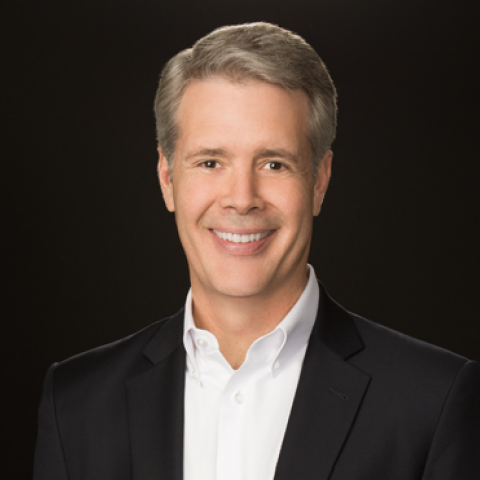“White spaces,” or unused radio frequencies in between TV channels, have long been eyed by technologists as perfect for connecting a sea of countless devices to the internet--everything from heart monitors to your car. A little-known government database is supposed to help prevent America’s newest “white spaces,” or “super Wi-Fi,” wireless devices from interfering with other electronics.
But that database has been invaded by a group of sketchy characters going by the names John Q Public, Sue Q Public, NoneNone and John Doe. Some of them hail from 123 Jump Street. On May 1, the Federal Communications Commission is giving the public a chance to comment on how best to deal with these suspicious characters. What the FCC does about it could affect the evolution of the emerging Internet of Things.
During my seven years as an FCC commissioner, I was a strong proponent of allowing innovators to use white spaces without having to get an FCC license. The TV frequencies are highly coveted because they can carry large amounts of data over long distances while penetrating buildings. Enabling consumers and technologists to take advantage of these radio bands in an unlicensed manner is seen as the epitome of the “permissionless” internet. Innovation could spread quickly without having to wait for government approvals.
Our template for success was the first generation of Wi-Fi: it seemed almost as though no one had heard of it on Friday, but by Monday everyone was using it. Its unlicensed nature unleashed a beautiful explosion of entrepreneurial brilliance. Super Wi-Fi operating in the TV bands would be even better.
Under federal law, however, devices using white spaces cannot cause harmful interference to licensed users, such as TV broadcasters and some theaters and churches using wireless microphones. This requirement makes sense to ensure electronics don’t drown each other out, turning them into junk. But how do you ensure such devices won’t step on each other’s toes?
With a reliable national database of all devices using the TV white spaces, of course.
Why We Need a Reliable National Database for White Space Devices
The emerging Internet of Everything is estimated to generate up to $14.2 trillion in new global economic activity by 2030, including $7.1 trillion for the U.S. As everything from our home to our cars and our medical devices become connected to the Net, keeping it all functioning and thriving will require gobs of new spectrum. The TV white spaces provide the wireless “oxygen” needed to allow our tech economy to breathe. (Using of some of the federal government’s spectrum offers even more potential, but that’s another story.)
To make it all work, however, devices can’t interfere with one another – hence the need for a flawless database.
Since the FCC formally opened the door to this new world in 2002, years of prototype testing by the FCC’s excellent engineers ensued, as did numerous proceedings that sought public comment. Finally, in 2011, the FCC created a framework that insulated licensed users from harmful interference while opening a new frontier for America’s tech economy.
All of the FCC commissioners, including myself, concluded that the key to moving forward with this new win-win model for tech innovation was having in place a high-quality national database that would precisely keep track of who had the new white-space devices and where they were located. Location accuracy would be especially important as America pushes to maintain its leadership role in perfecting the technologies of the future, such as driverless cars.
Trouble at 21 Jump Street
As recently reported in Re/code, however, new studies are revealing that up to a third of the information in the database may be inaccurate or just plain made up.
For instance, in addition to numerous “John Does” and “John Smiths,” studies conducted on behalf of the National Association of Broadcasters reveal that more than 80 devices are registered in the database under the name “Meld test.” Others are registered as being located at “123 Jump Street” or have contact phone numbers such as “(999) 999-9999”. One device is registered to a spot in the Atlantic Ocean about 500 miles off the coast of Cameroon.
These falsehoods aren’t just humorous isolated errors; they number into the hundreds. And they show a cavalier attitude towards maintaining the integrity of the cornerstone of our next-gen tech economy.
How We Fix It
The FCC should meticulously reverse engineer its flawed database and reveal how its vendors bungled their fundamental task. Hollow promises of “we’ll fix it” are not enough. The purpose of a deep-dive investigation shouldn’t be to assign blame, necessarily, but to learn from mistakes to create a more perfect system. The rest of the world is watching and may emulate what we do. Additionally, the FCC should lay out a detailed plan, with an opportunity for public comment, on how to make the database perfectly efficient and transparent to ensure this debacle doesn’t happen again. Going forward, we can’t rely on after-the-fact studies to tell us how broken this crucial system is. America’s technologists need the peace-of-mind that their ingenious creations will actually work. And America’s consumers deserve no less.
Only about 600 devices are in use right now, but in a few months, a massively important FCC spectrum auction will open up even more white spaces. The FCC should hurry to fix its flawed database before then.
If the FCC can’t make the database work, not only will tech innovators and broadcasters alike be harmed, but America’s consumers will lose. Either way, the FCC should act fast and give the tech sector a pathway to success.



















